How to Use Trekking Poles: Hiking with A Bit of Help
Trekking poles are a common sight on the mountains these days, used both for climbing and descending. But unfortunately, they’ve developed an unsavory reputation as a useless tool that only shows weakness.
[the_ad_group id=”21″]
You aren’t alone if you think that trekking poles are for grandparents.
But the truth is, trekking poles can make you a stronger, faster, and more effective hiker. They can give you more power and reduce the signs of fatigue while hiking.
There are many different benefits to using trekking poles, for young and old hikers. Read on to learn the benefits, and find out how to use trekking poles.
Benefits of Using Trekking Poles
Improved Endurance
Using hiking poles will help you hike longer distances for more hours. When you go on a long hike without trekking poles, you’re only engaging the muscles in your legs and glutes. These are the strongest muscles in your body, so they give you a lot of power.
But over time, that limited muscle group will fatigue, and you will find yourself exhausted before the end of a long hike.
When you use trekking poles, you redistribute your effort, so that your arms, core, and legs are all working to help you traverse the terrain. The end result? You will be capable of hiking greater distances with less fatigue. Who doesn’t want that?
Improved Fitness
This goes hand in hand with improved endurance. If you can hike longer and further, it follows that you would increase your overall level of fitness.
When trekking poles are used during a hike, the body uses more muscles to cover the same amount of ground. When you use these muscles to cross the terrain, you are strengthening them at the same time.
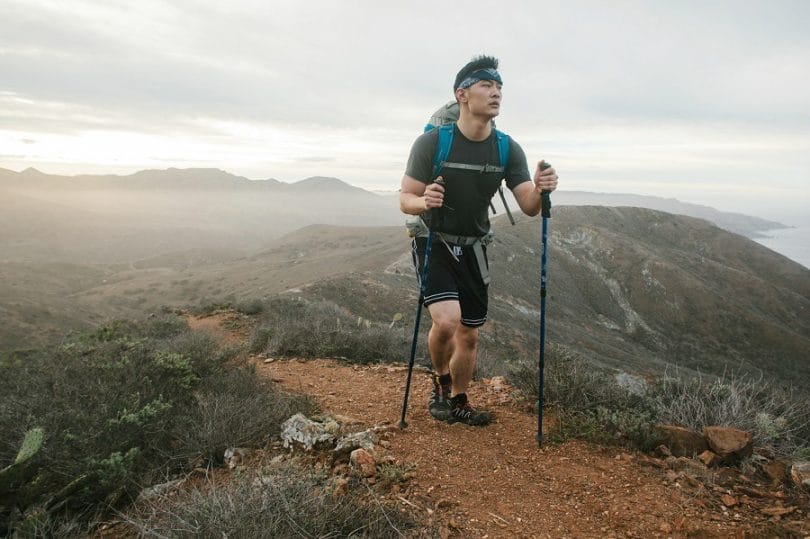
Long distance hikers sometimes worry that they will build lots of muscle in their legs, but leave their arms behind. This effect is playfully known as “T-Rexing”. Trekking poles can help prevent this, by engaging your arms in the act of hiking. This way, you’ll build muscle in your legs and your arms during your extended backpacking trip.
In fact, using trekking poles while hiking increases your strength and your cardiovascular capacity. The combined motion of legs and arms forces your heart and vascular system to work more intensely, improving overall health. By some estimates, you can increase your caloric burn by 20-40% just by using trekking poles. It’s also wise to pack lightly. You can read our popular piece on how to choose the best daypack for shorter hiking activities.
Easier Ascent
Trekking poles help immensely during any descent, but they can also make an ascent quicker and more enjoyable. Climbing mountains is undeniably one of the joys of hiking, but every hiker has their limits. It feels terrible to reach that point where you cannot take another step and your pack becomes unspeakably heavy.
See also: Hiking Shoes vs. Hiking Boots: How to Choose the Best Hiking Footwear
By using trekking poles in the correct way, you can displace the effort required to climb the mountain. Instead of utilizing only your legs to propel yourself upwards, you can also push with your arms. This action redistributes your bodily effort, engaging more muscles and allowing you to trek more quickly for a longer period of time.
The most important thing to remember is to push off of the poles, using them to propel yourself upwards. Do not plant the poles above you and pull yourself up. That is just a ticket to quicker exhaustion. When used correctly, trekking poles allow you to gain more momentum and reach the top of the mountain.
Safer Descent
For adults with weak knees, poor balance, or anyone carrying a very heavy pack on the trail, the descent can sometimes be more tiring that the ascent.
This is where trekking poles come in. By using trekking poles as you descend, you can lessen the impact on your knees, maintain your balance, and exert less energy overall to get down the trail.
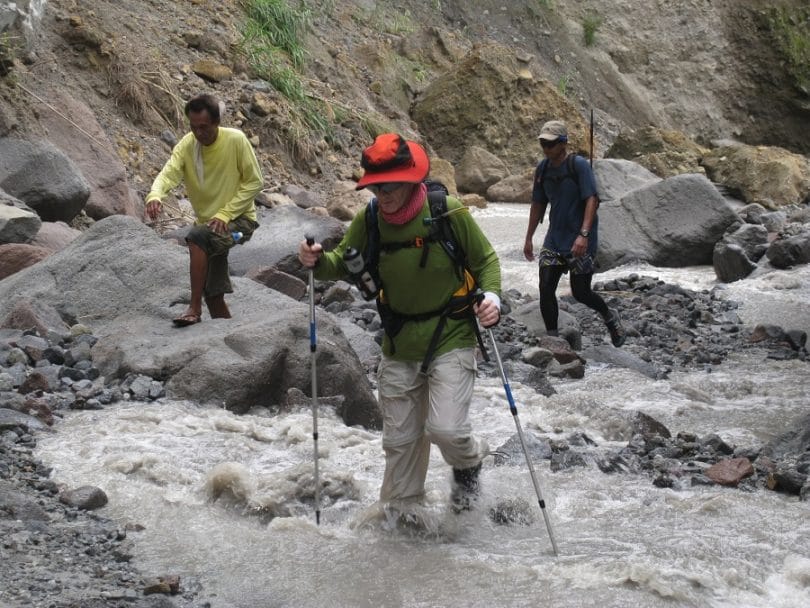
If the weight of your pack or a lack of balance means you find yourself slipping dangerously down a steep descent, trekking poles can help with this as well. By planting the poles firmly into the ground, you can increase your stability and use the poles as a tool to get you safely to the bottom. See our article review of the best ultralight backpacking gear to keep you safe while hiking.
Improved Posture
When trekking with a heavy pack, it is not uncommon to slouch forward over your feet as you become more fatigued. However, leaning over like this can be dangerous. The action displaces your weight and increases the risk of slipping and even serious injury.
[the_ad_group id=”22″]
By employing trekking poles during your trip, you can help yourself maintain a strong, upright posture for the duration of the trek. This puts less strain on your spine and consumes less energy overall; letting you hike faster, longer, and more comfortably.
How to Use Trekking Poles: General Instructions
Set Your Poles to the Correct Height
You’ll have to follow the specific adjustment instructions of your model of trekking poles, but most collapsible trekking poles these days come in three sections.
The most stable way of adjusting your trekking poles is to let the middle section out fully, or as close to full as you need for your height. Then you can use the bottom section to make small adjustments as needed.
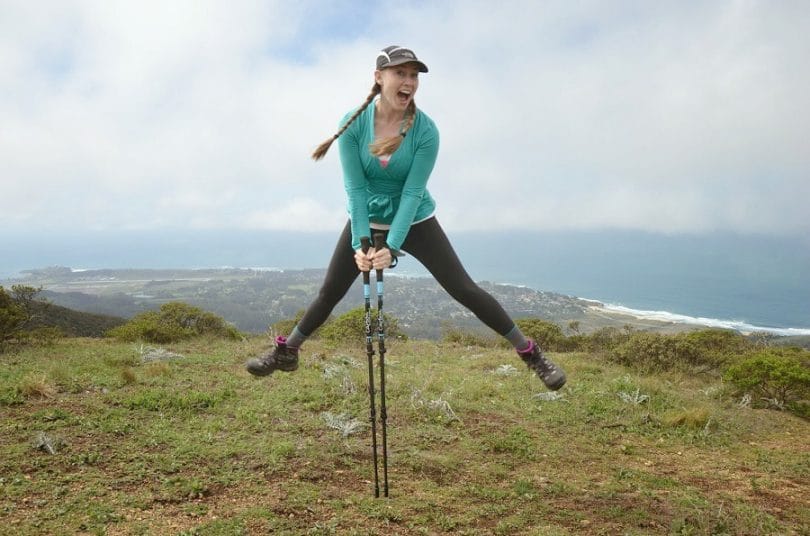
The correct height for your poles should hit at about your elbows or a little lower. At this height, you should comfortable grip your poles with a loose bend in your elbow.
Insert your hands into the straps and adjust
You want the straps to wrap diagonally across the palm of your hand and underneath your thumb. Do not wrap the straps loosely around your wrist, or avoid them altogether. The straps are a very useful tool that allows you to maintain only a loose grip on the pole handle.
Also, they prevent you from dropping the pole when you are tired. Nobody likes to watch their trekking poles bounce back down the mountainside that they just climbed.
Use the correct grip
To grip your poles effectively, you do not need to use a tight death grip. In fact, just loosely wrap your hands around the handle of the poles.
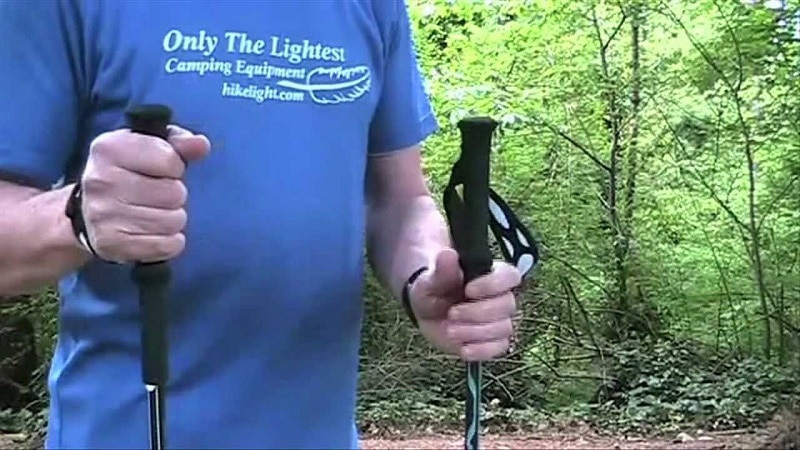
The straps around your palms should mostly support the poles, so you just need a light grip to maintain control.
Trekking Instructions: Level Ground
- Set poles to the correct height. When walking along flat, or slightly undulating relatively level ground, you can keep your poles at a comfortable neutral height.
- Let your poles follow the natural motion of your body. When you walk, your hands automatically move along with your legs. Left foot forward, right hand forward. Allow your poles to follow this rhythm. When you plant your left foot, you plant your right pole slightly ahead of yourself.
- Use Poles to Generate Momentum. Remember to keep a light grip on the poles, then use them to propel yourself forward by pushing off from the poles. Do not pull or drag yourself along the trail, this will only fatigue you more quickly.
Trekking Instructions: Uphill
- Shorten Your Poles. When using your poles to trek uphill, you’ll want to shorten them by a few inches. This will allow you to plant them slightly above you, without having to overextend your arms.
- Continue with Natural Rhythm. As with the level ground instructions, you want to follow the motion of your body. Place the left pole down along with the right foot. Remember to use the pole to push yourself upwards as you ascend. Do not use the poles to pull yourself up the mountain. You will get exhausted much more quickly.
- Tip: Don’t plant pole in front of your lead foot.Your lead foot is the foot that is in front. A good rule of thumb when walking uphill with trekking poles is to remember not to plant your front pole ahead of your front foot. Try planting the pole even with your front foot or slightly behind. This makes it more difficult for you to pull yourself up, and should make the pushing motion more instinctive.
Trekking Instructions: Downhill
- Lengthen Your Poles. When using trekking poles to walk downhill, you want to lengthen the poles to reach above the height of your elbow. This will allow you to use the poles to reach down the mountain, without losing your good posture.
- Firmly place poles downhill. As you begin your descent, you want to continue to follow the motion of your body, and use the trekking poles as support. Reaching down the mountain, firmly plant the pole into the terrain, and push off of the pole as you descend, keeping yourself upright. Do not try to pull yourself down the mountain.
- Tip for extremely steep or slippery descent. If you are trying to walk down a slope that is very steep or slippery, you can use the poles as a brace to give yourself stability.
Plant your pole extra firmly into the terrain, by pushing the end of the pole into the earth. Then stepping with the same foot, walk sideways down the mountain.
[the_ad_group id=”23″]
Wedge your foot up against the secure pole. This will support your weight and allow you to stabilize yourself on the downhill without sliding.
Conclusion
In short, trekking poles help you hike longer, faster and prevent fatigue and injuries.
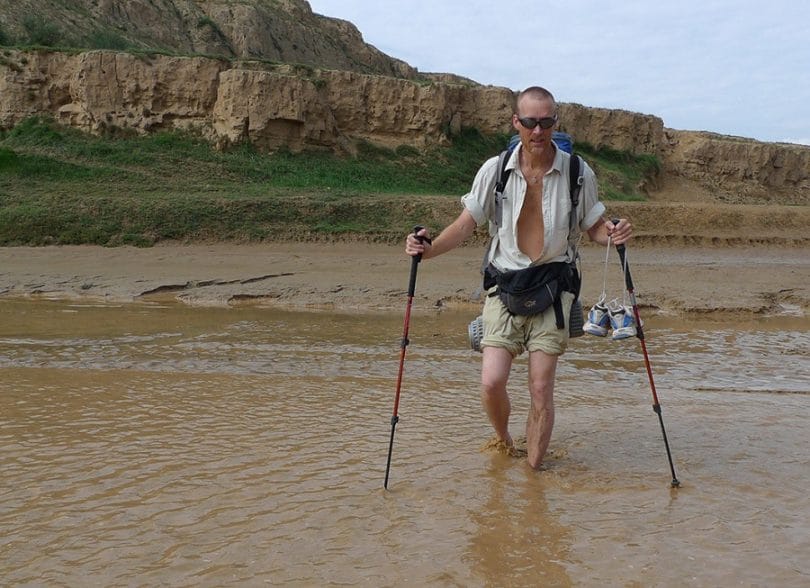
They’ve developed an unfair reputation as an unmanly tool, but it is time to turn that around. In fact, using trekking poles makes you more powerful and capable. Just remember the golden rule of trekking poles: push don’t pull.
Before your next adventure, check out our review of the best trekking poles that you can use.



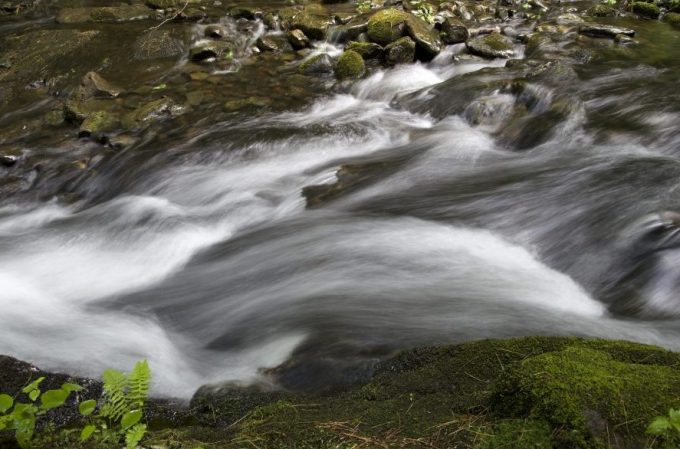
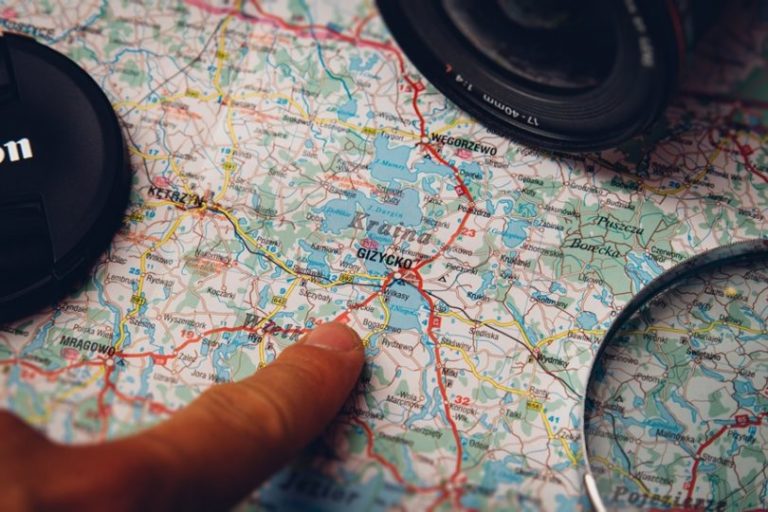
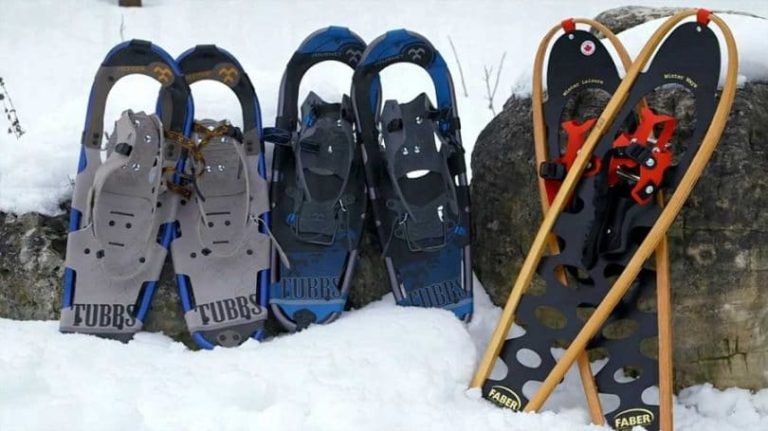
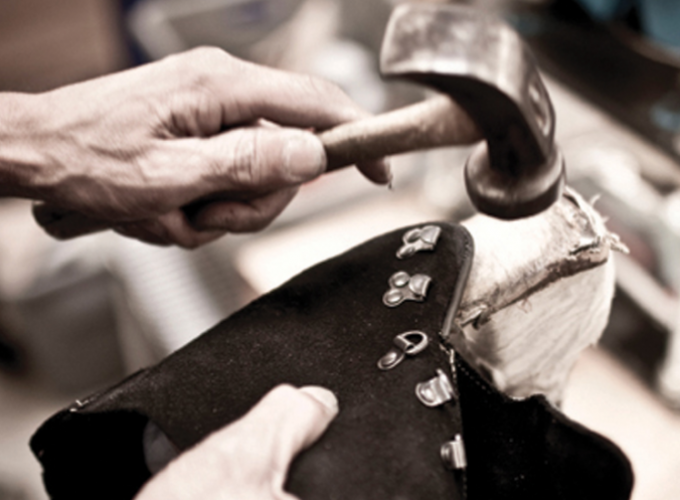
I’ve been an active backpacker and hiker for more than 10 years and until recently have never used hiking poles. When in my 20’s, I’ll admit, I considered trekking poles to be a nuisance and unnecessary. Recently, however, I’ve been experiencing a lot of knee and back pain so I decided to pick up my first pair and try them out on a familiar (though rather rugged) trail.
In recent years, this particular trail would have caused a fair amount of pain in my knees, however, when using the poles, the pain was barely noticeable. Though I can’t be certain, perhaps it was just psychological, I’m sure they took a lot of pressure off my knees.
At this stage, my use has been minimal, and I can’t say definitively if they’re a good fit for me, but I definitely liked them after the first go, and who knows, if I’d have used them from the beginning, would they have prevented the knee and back pain I have now?
Trekking poles are considered unnecessary if you have no idea how to use them. However, it is never too late to utilize one on your future treks. It is a simple tool but it can really improve your hiking and trekking experience.
I’ve been an active backpacker and hiker for more than 10 years and until recently have never used hiking poles. When in my 20’s, I’ll admit, I considered trekking poles to be a nuisance and unnecessary. Recently, however, I’ve been experiencing a lot of knee and back pain so I decided to pick up my first pair and try them out on a familiar (though rather rugged) trail.
In recent years, this particular trail would have caused a fair amount of pain in my knees, however, when using the poles, the pain was barely noticeable. Though I can’t be certain, perhaps it was just psychological, I’m sure they took a lot of pressure off my knees.
At this stage, my use has been minimal, and I can’t say definitively if they’re a good fit for me, but I definitely liked them after the first go, and who knows, if I’d have used them from the beginning, would they have prevented the knee and back pain I have now?
Trekking poles are considered unnecessary if you have no idea how to use them. However, it is never too late to utilize one on your future treks. It is a simple tool but it can really improve your hiking and trekking experience.
I’ve always been a trekking pole user and I personally couldn’t imagine heading out onto the trails without them.
A common misconception is that trekking poles are simply for people who worry about falling on the trails or supporting you when you’re tired.
In reality, using them is like having four legs, you are able to engage, exercise and draw strength from your entire body, taking the weight and pressure off your knees and spreading it around your body.
Once you’ve tried a pair, you’ll never look back.
Trekking poles offer more things that a lot of campers thought they would be. They are not just a pair of lengthy accessories, they offer better traction and mobility especially when trekking challenging trails. It also, as you’ve mentioned, balances out the strain that goes to the lower portion of your body.
I’ve always been a trekking pole user and I personally couldn’t imagine heading out onto the trails without them.
A common misconception is that trekking poles are simply for people who worry about falling on the trails or supporting you when you’re tired.
In reality, using them is like having four legs, you are able to engage, exercise and draw strength from your entire body, taking the weight and pressure off your knees and spreading it around your body.
Once you’ve tried a pair, you’ll never look back.
Trekking poles offer more things that a lot of campers thought they would be. They are not just a pair of lengthy accessories, they offer better traction and mobility especially when trekking challenging trails. It also, as you’ve mentioned, balances out the strain that goes to the lower portion of your body.